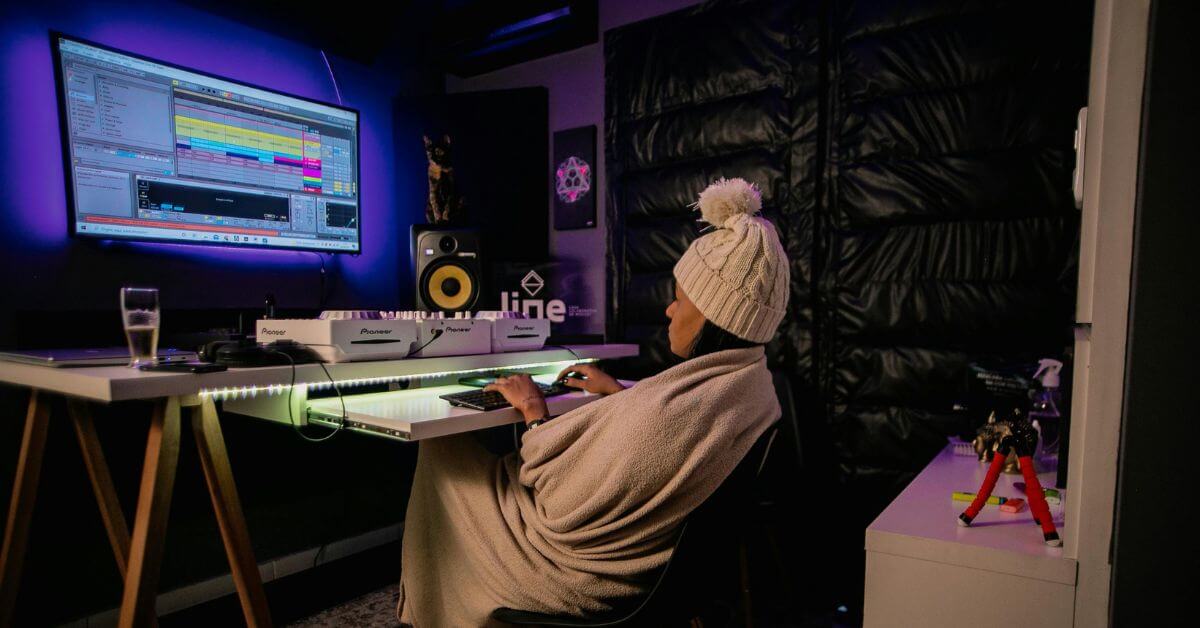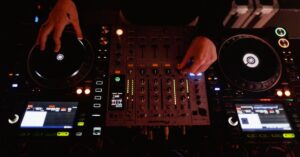How to overcome staring at a blank DAW
Starting a new project in your DAW can sometimes feel like staring into an empty void. The blank canvas is often one of the most daunting aspects of the creative process. When you’re already in the flow, ideas seem to naturally build upon each other. But at the beginning, with no foundation to work from, the sheer number of possibilities can be overwhelming, making it difficult to know where to even begin. While many might say, “Just start anywhere!” this advice is often too vague and unhelpful, especially when you’re facing endless options and no clear direction. 1 To help you break through this blank canvas dilemma and help you get the creative workflow rolling, here are five practical and creative ways to kick off your next project from scratch
Start with drums
Drums are the backbone of almost every electronic music genre, and they’re particularly central in techno. Starting with a solid rhythm gives you a foundation to build on, helping other elements naturally fall into place. Drums set the tone, define the groove, and create the energy. Whether it’s a driving kick pattern or a more complex, syncopated hi-hat loop, laying down your drum elements first creates a tone for the rest of the track.
If you’re feeling stuck, experiment with different drum samples and rhythms to help spark creativity. Sometimes, a change in groove can open up an entirely new direction for your track. In techno production, minimal and polyrhythmic drum patterns can give you room to layer and develop the idea of the track further
Start with a hook or melody
In some cases, starting with a hook, or any piece of theme, like a short riff or an interesting passage can give you a strong thematic element to work with from the get-go. In techno, a hook doesn’t have to be overly melodic – it could be a hypnotic synth line, a catchy tone, or even an abstract fx sound. Think of those memorable techno tracks where a single element repeats throughout but evolves over time, keeping the listener locked in.
If you’re not starting with a melody or motif in mind, don’t be afraid to explore sequencers and plugin presets to spark inspiration. In electronic music, the process often revolves around discovering an intriguing sound or pattern and building a track around it, rather than composing a traditional musical motive.
Start with an atmosphere or texture
Techno is as much about the space between the beats as it is about the beats themselves. Starting with an atmospheric or textural layer can help you define the mood and vibe of your track early on. Whether it’s a droning synth, background noise, or abstract soundscapes, creating a sonic environment at the start allows you to develop everything else within that space. Field recordings are also a great option, adding a personal and unique touch to the overall sound.
You can experiment with long reverb, delay, and creative effects to make the atmosphere evolve throughout the track. This method not only adds depth to your production but also gives you a better idea of how to balance and arrange other elements as they come into play.
Start with the low end
The low end is crucial not only in techno music but in all sorts of electronic club music. It anchors the track and provides the driving force that moves the crowd. If you’re stuck at the start of a project, focusing on the bass line or sub-bass elements first can help ground your track. A powerful bassline can also inspire the direction of your drum patterns, melodies, and other supporting elements.
Whether you’re using a synth to create a rolling bass line or layering kick drums with sub-bass elements, getting the low end right can immediately set the tone for the entire track. For more tips on how to produce better bass lines, have a look at my blog post here.
Start with your own recorded samples
One of the most personal and creative ways to kick off a new project is by using your own recorded samples. This approach brings a unique touch to your production, separating your sound from the endless stream of pre-made sample packs. By working with material you’ve created, you’re building from an authentic, original starting point.
This is a point I emphasise often because it makes the creative process so much more efficient. No matter what material you’ve recorded in the past, it’s worth revisiting to find potential inspiration. Whether it’s a bassline, a synth loop, or a kick drum, something you’ve previously created might spark the idea for your next track. Going through these sounds allows you to build on ideas that have already caught your attention, making the daunting task of starting a new project less overwhelming. Sometimes, all it takes is that one element to ignite the creative process and drive the direction of an entire track. Reusing your unique sounds also adds a personal touch, ensuring your productions maintain originality while benefiting from a faster, more focused workflow. To learn more about an optimised workflow, you can check out my previous blog post on how to separate the workflow in 2 distinguished phases.







